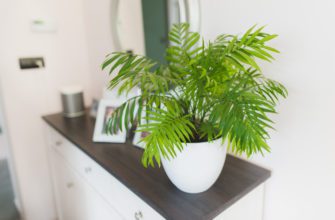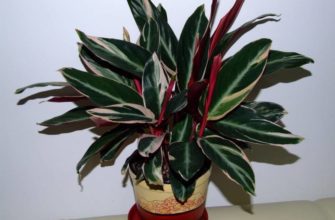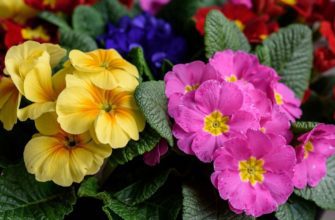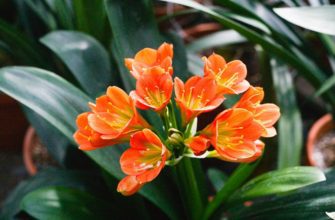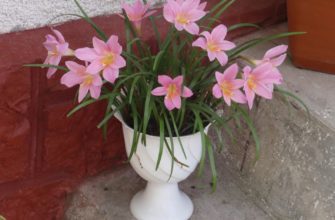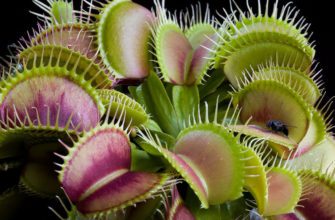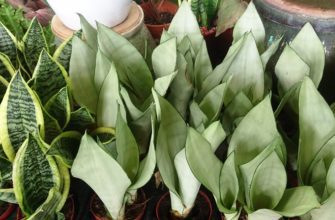Hippeastrum is an exquisite and majestic flower that has become a real decoration of many homes thanks to its large and bright flowers. This plant not only pleases the eye with its magnificent flowering, but also becomes a source of pride for those who care for it. With proper care, hippeastrum can bloom repeatedly, giving its owner unforgettable moments of joy. In this article, we will tell you how to grow and care for this amazing plant at home, so that it pleases you with its flowering year after year.
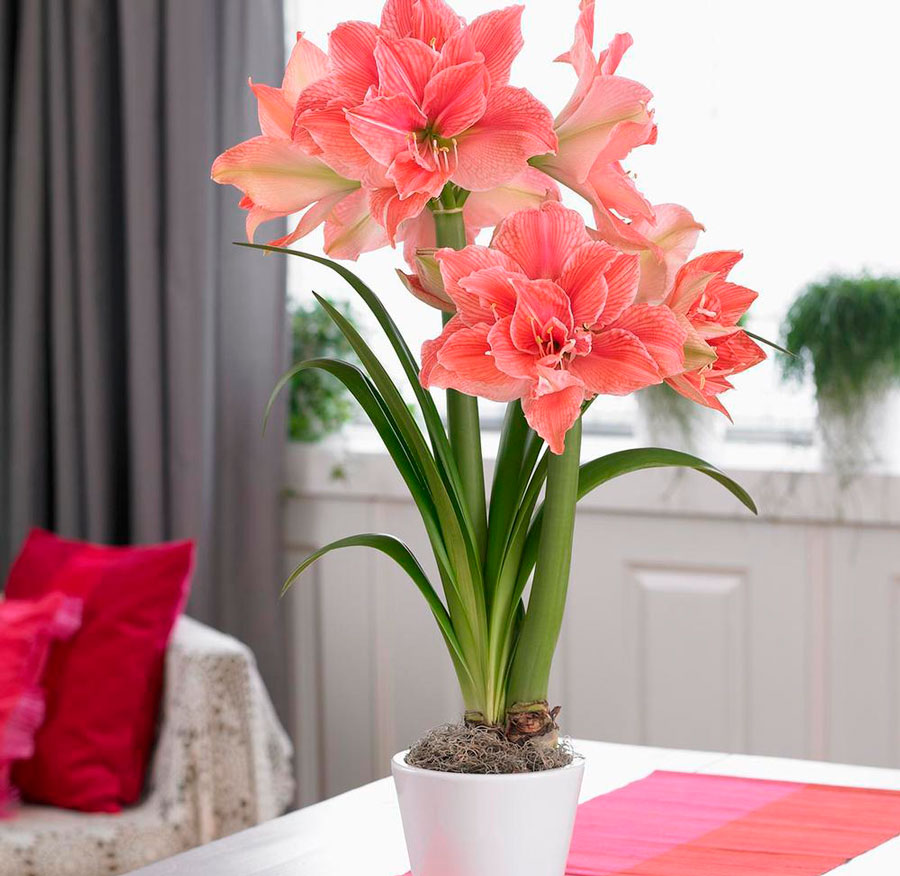
Description of the plant hippeastrum
Hippeastrum is a perennial herbaceous plant known for its bright and large flowers resembling lilies. The roots of the plant are thickened, having the shape of a bulb, which serves to accumulate nutrients.
The bulb itself partially protrudes from the ground, creating an interesting visual effect. The leaves of the plant are long, narrow and fleshy, usually arranged in a rosette.
But the real decoration of the hippeastrum is its flowers. They can be of different shades - from white to deep red, as well as pink, orange and multi-colored.
The flowers are located on a tall peduncle and are usually funnel-shaped. Each bulb can produce one or more flower stalks, which, depending on the variety, can have from 2 to 12 flowers.
The plant's appearance makes it a popular choice among indoor plant lovers. This plant becomes a true decoration of the house, especially during its flowering period.
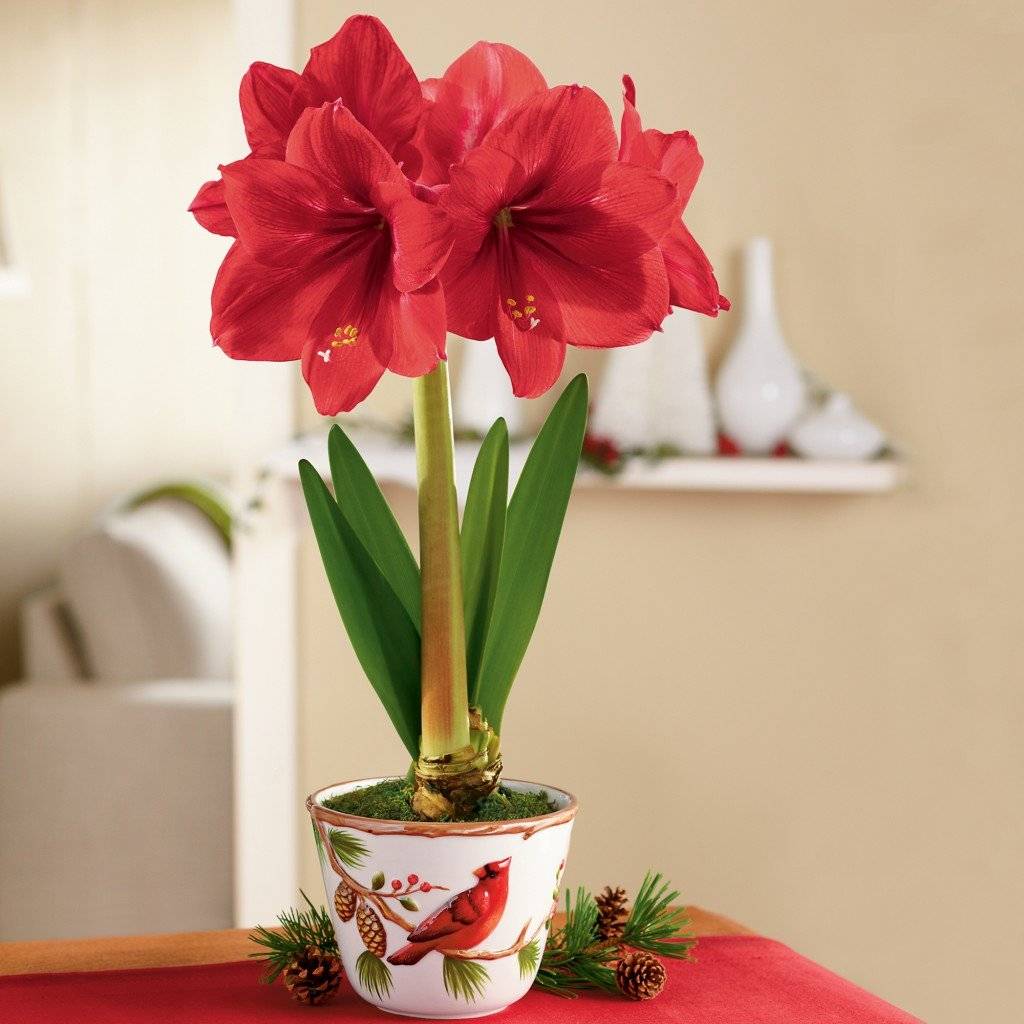
Hippeastrum care at home
Caring for hippeastrum at home includes several key points that allow the plant to remain healthy and delight you with its luxurious flowering:
- Lighting: Hippeastrum prefers a bright, diffused light place. It is advisable to provide it with a place on the eastern or western window, avoiding direct sunlight at midday.
- Watering: The plant does not like over-watering. Water the plant when the top layer of soil in the pot becomes dry. Use soft, settled water.
- Temperature conditions: During the period of active growth, the plant is suitable for room temperature. After flowering, it is advisable to create a short period of rest, setting the temperature within 12-15°C.
- Top dressing: During the growth and flowering period, it is recommended to regularly (once every 2-3 weeks) feed the plant with complex mineral fertilizers for flowering indoor plants.
- Transfer: Hippeastrum is replanted approximately once every 3-4 years or when the bulb becomes too crowded in the pot. When replanting, you need to choose a pot 3-4 cm larger than the previous one.
- Post-flowering care: After the plant has finished flowering, you need to carefully cut off the flower stalk. Continue to care for the plant while the leaves retain their green color.
- Reproduction: Hippeastrum is usually propagated by offspring that appear at the base of the mother bulb.
- Pests and diseases: By following a watering regime and avoiding standing moisture, you can minimize the risk of fungal diseases. It is also worth regularly checking the leaves for pests such as aphids or spider mites.
By following these recommendations, you can grow a healthy hippeastrum and enjoy its beautiful flowering every year.
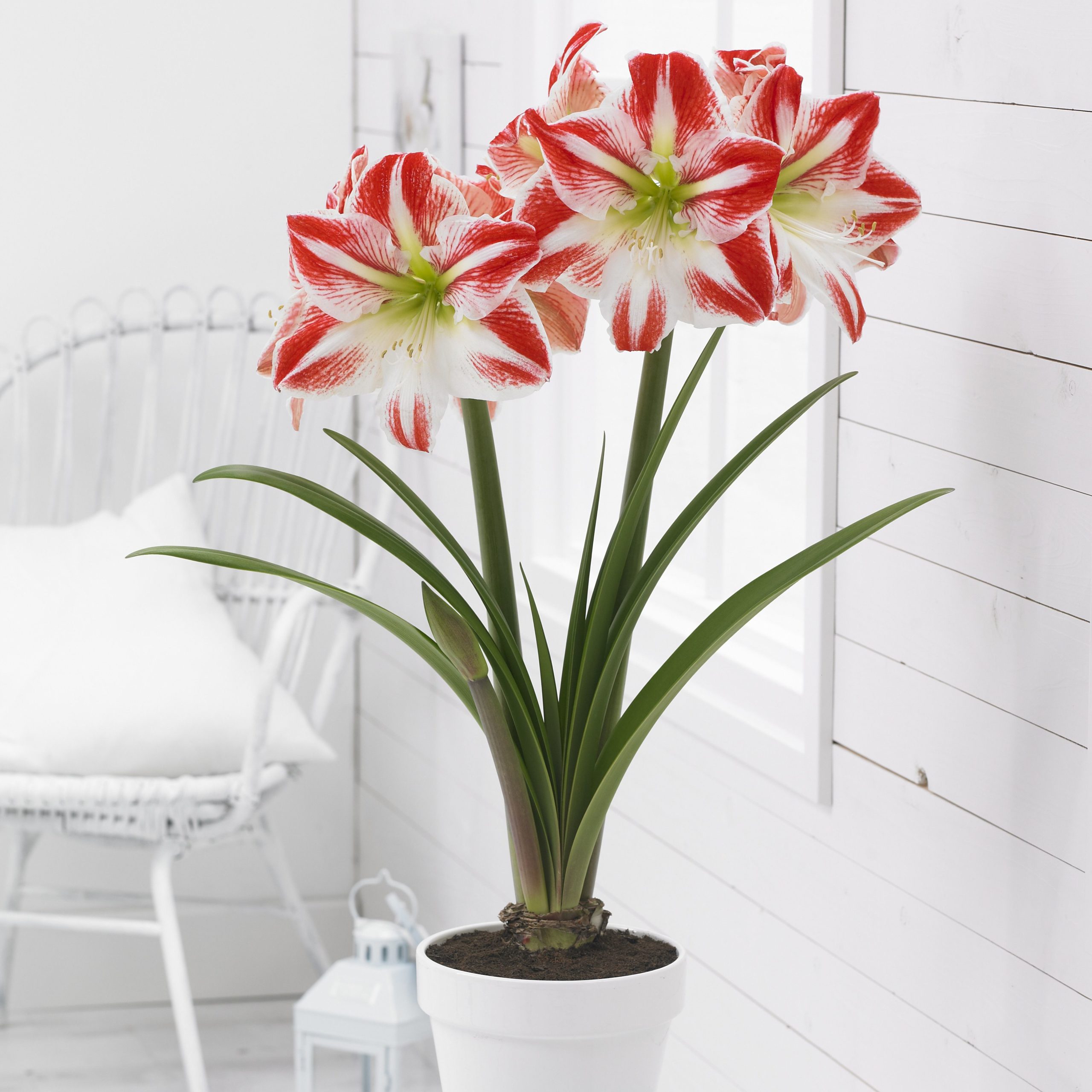
Transplantation and propagation of hippeastrum
Replanting and propagating hippeastrum are important stages of caring for this plant, allowing you to maintain its health and active flowering. Let's consider each of these stages in detail:
Hippeastrum transplant:
- Frequency: Hippeastrum is repotted approximately once every 3-4 years or when the roots become crowded in the pot.
- Time: The best time for transplanting is late winter or early spring, before active growth begins.
- Technology: Remove the plant from the pot and carefully free the roots from the old soil. Check the roots for rot or damage and trim if necessary. Choose a new pot that is 3-4 cm wider than the previous one. Put a drainage layer (expanded clay or gravel) on the bottom of the pot. Then fill the pot with a mixture for flowering indoor plants.
Reproduction of Hippeastrum:
- Children: This is the simplest and most common method. Young bulblets (babies) form at the base of the mother bulb. They can be carefully separated and planted in individual pots.
- Seeds: If your hippeastrum has bloomed and formed seeds, they can be collected and planted. However, this method requires more time and patience. The seeds are sown in light fertile soil, moistened and covered with film to create a greenhouse effect. After the shoots appear, the film is removed.
- Dividing the bulb: In some cases, a large bulb can be divided into several parts, each of which must have at least one bud site.
With proper transplantation and propagation, hippeastrum will delight you with its luxurious flowering and active growth.
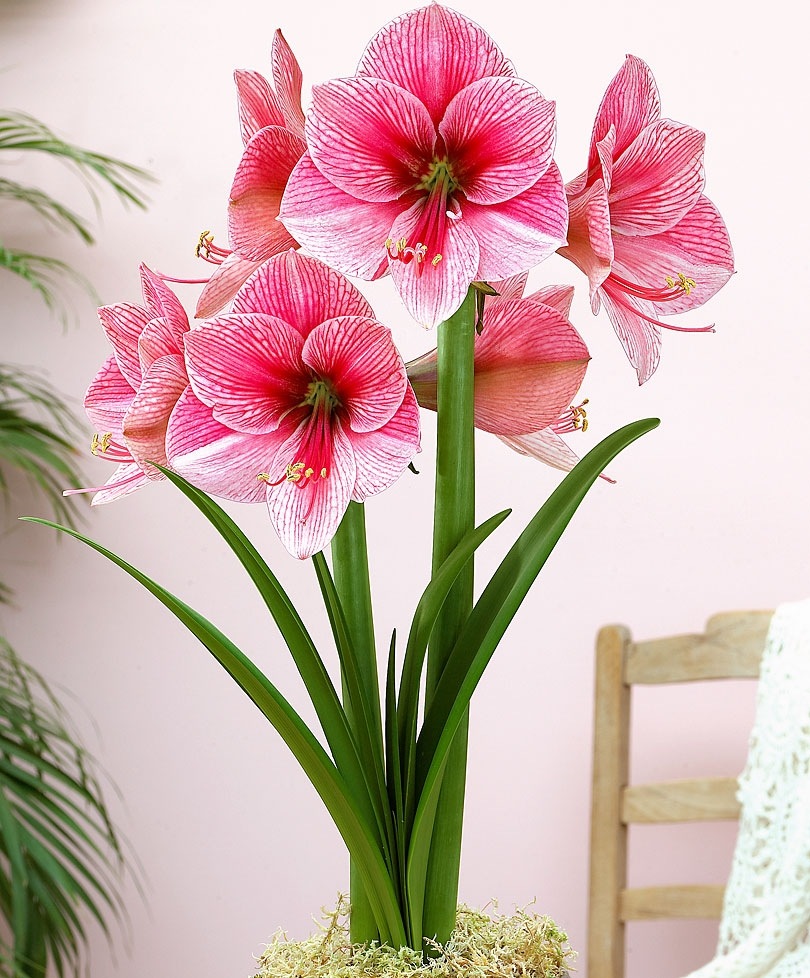
Benefits of Growing Hippeastrum at Home
Growing hippeastrum at home brings many benefits, both for the plant and for its owners:
- Vivid bloom: Hippeastrum is known for its large, rich flowers, which can become a bright decoration of the interior. At home, with proper care, the plant pleases with its flowering for a long time.
- Psychological benefit: By caring for a plant, a person receives psychological relief, relaxation and a sense of satisfaction from caring for and watching the plant grow and bloom.
- Ease of care: Despite its exoticism, hippeastrum is quite unpretentious and easy to care for, which makes it an excellent choice even for novice gardeners.
- Air purifying properties: Like many houseplants, the plant helps improve indoor air quality by absorbing harmful substances and releasing oxygen.
- Decorative element: Hippeastrum can become part of the interior design, adding brightness and originality to the overall style of the room.
Thus, hippeastrum not only brings aesthetic pleasure, but also helps to create a favorable atmosphere in the house.
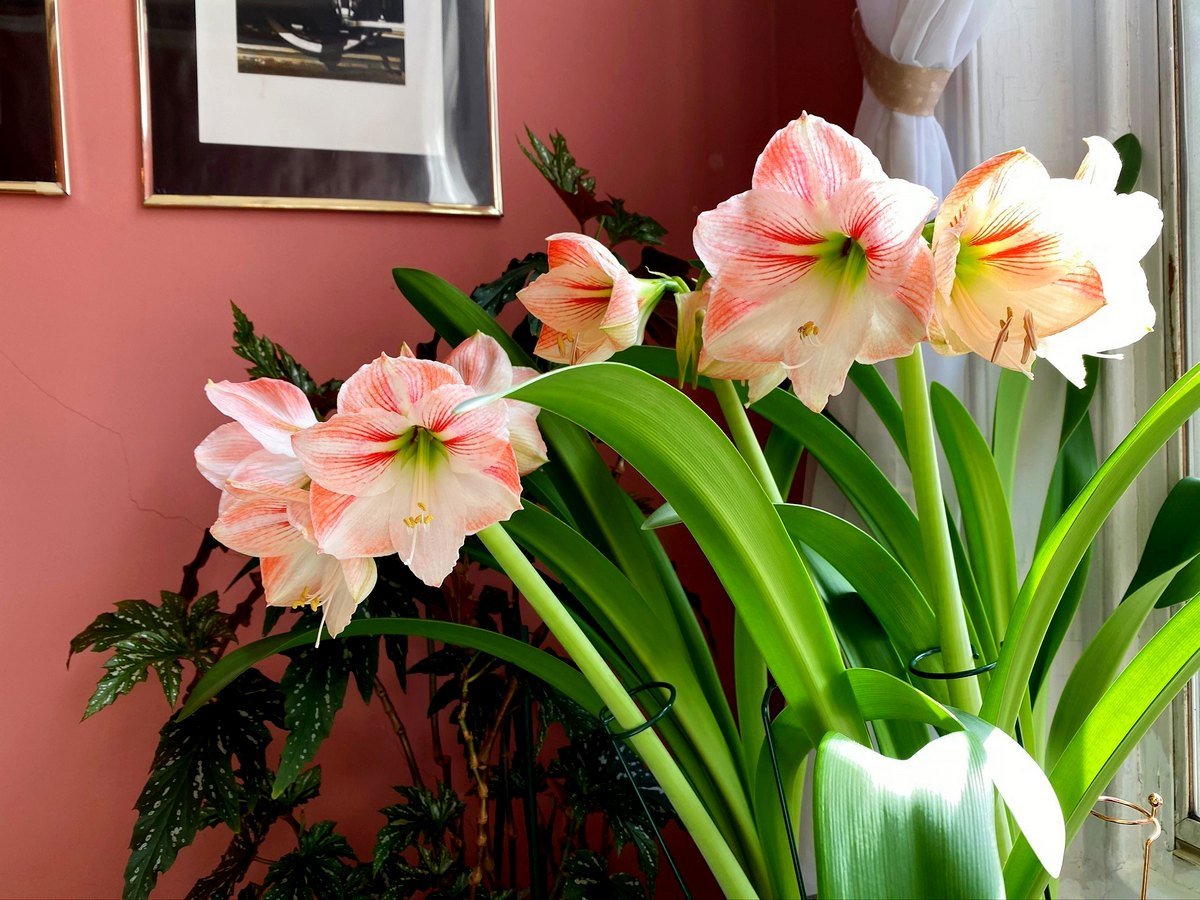
Possible diseases of hippeastrum
Hippeastrum is a beautiful plant, but like any other, it is susceptible to a number of diseases if not cared for properly. Here are some of the most common problems and their symptoms:
- Bulb rot: This is the most common problem, usually caused by overwatering. Signs include softness and darkening of the bulb. To prevent rot, be sure to water regularly and ensure good drainage.
- Spider mite: Signs include fine webbing between leaves and yellowing leaves. To combat mites, use insecticides or folk methods such as spraying with a soap solution.
- Aphid: Small green or black insects on stems and leaves. They feed on the sap of the plant, causing it to dry out. Spraying with insecticides or a solution of soap and water will help control aphids.
- Fungal diseases: Signs may include spots on leaves, and affected areas turning black or brown. Reducing humidity and treating with fungicides will help control the problem.
- Bacterial infections: This may appear as water-soaked spots on the leaves, which then turn black. The infected parts of the plant should be removed and the remaining part treated with an antibacterial agent.
- Chlorosis: Leaves become pale or yellowish due to iron deficiency. To solve this problem, you can use specialized fertilizers containing iron.
To prevent hippeastrum diseases, keep the pot clean, regularly ventilate the room, maintain the correct watering regime and temperature, and regularly inspect the plant for signs of disease or pests.
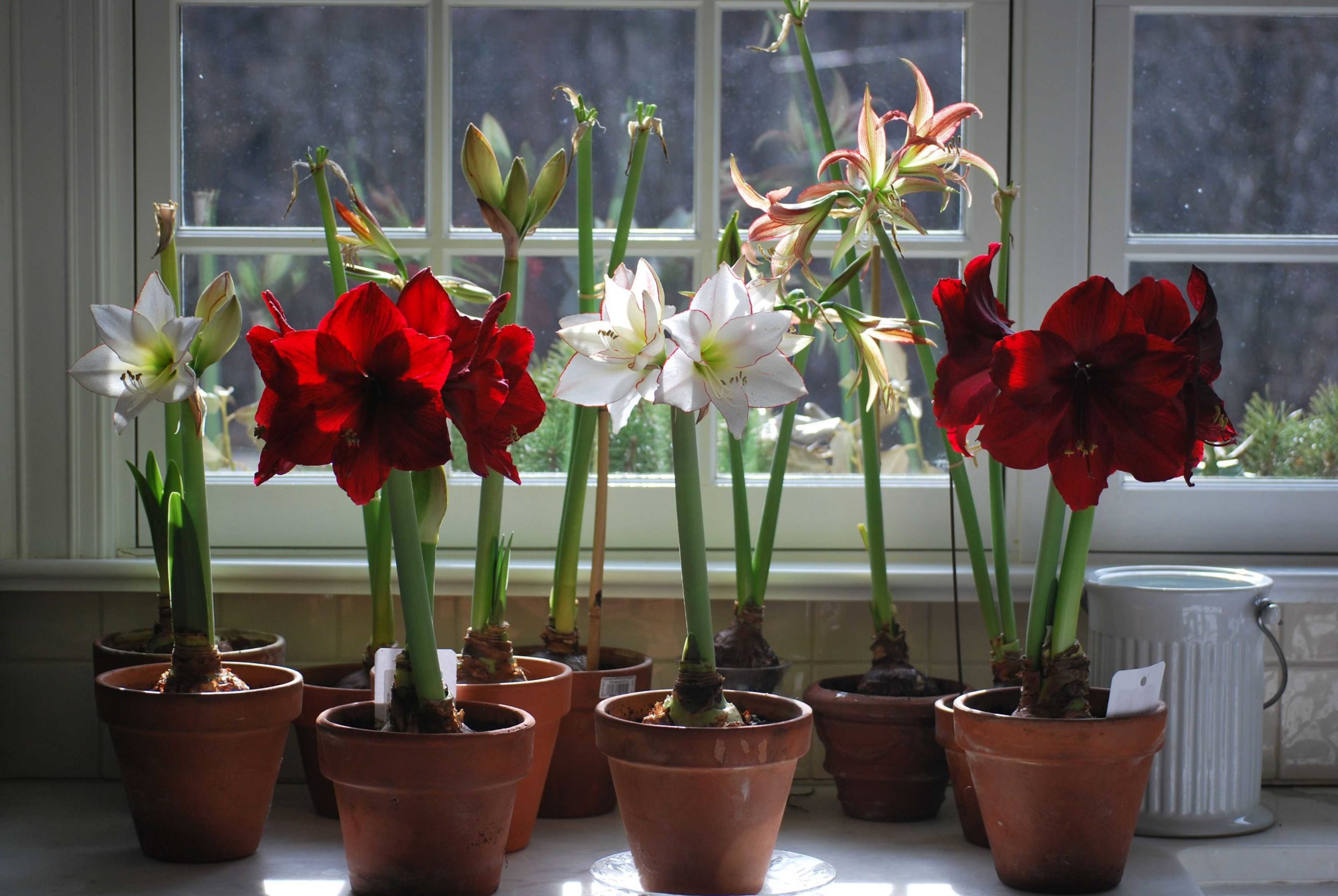
Plant Care Tips
Hippeastrum is a plant that rewards its owners with magnificent and bright blooms if properly cared for. Here are some unique tips to ensure that your hippeastrum pleases you for a long time:
By following these tips, you can create optimal conditions for the growth and development of your hippeastrum and enjoy its beauty every year.
Conclusion
Hippeastrum is not only a beautiful plant, but also an amazingly grateful one. If you follow simple care rules, it can delight you with its luxurious flowering at home.
Its bright and voluminous flowers become a real accent of the interior, emphasizing the style and taste of its owner. We hope that our recommendations will help you grow a healthy and beautifully flowering plant that will become a true decoration of your home and a reason to be proud.

